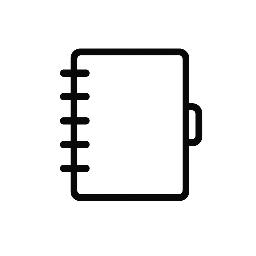A reverse mortgage Ontario allows homeowners aged 55 and older to convert part of their home’s equity into tax-free cash without selling the property or making monthly payments. It offers financial flexibility by providing funds that can be used for retirement, healthcare, or other expenses, while the loan is repaid only when the homeowner sells or moves out permanently.
This option appeals to many seniors seeking to supplement their income while staying in their homes. However, understanding how reverse mortgages work in Ontario, including eligibility, costs, and potential risks, is essential before making a decision.
Many people overlook the fine print or assume it’s the same as a traditional mortgage. Exploring the specifics can help them decide if it is a practical financial tool or if alternative options might better suit their needs.
Understanding Reverse Mortgage Ontario
Reverse mortgages in Ontario allow homeowners aged 55 and older to access the equity in their homes without monthly payments. These loans are repaid when the homeowner sells the property, moves out permanently, or passes away. Understanding eligibility, the mechanics of the loan, and available types is essential before considering this financial product.
Eligibility Requirements
In Ontario, the borrower must be at least 55 years old. The property must be the borrower’s primary residence and located within Ontario. The home should have significant equity, usually with at least 50% or more of its value owned outright.
Applicants must be Canadian citizens or permanent residents. Lenders will assess the condition and market value of the property to determine loan amount eligibility. No income or credit check is typically required, but the homeowner must be able to maintain the property and pay property taxes and insurance.
How Reverse Mortgages Work
A reverse mortgage allows homeowners to borrow against their home equity without monthly repayments. Interest accumulates over time and is added to the loan balance. The loan is repaid when the homeowner sells, permanently moves out, or dies.
The loan amount depends on the borrower’s age, home value, and current interest rates. Older borrowers generally qualify for larger loans. Access to funds can be lump sum, monthly payments, or line of credit. Homeowners retain ownership but must maintain the home and meet loan conditions.
Types of Reverse Mortgages in Ontario
The most common type is the Canadian Home Income Plan (CHIP), offered by HomeEquity Bank. CHIP provides flexible payment options tailored to the borrower’s financial needs. It is insured by the Canada Mortgage and Housing Corporation (CMHC).
Another option includes private reverse mortgages through other lenders, which may have differing terms and interest rates. Some lenders offer home equity lines of credit with reverse mortgage features but these may involve more risk or higher fees.
| Type | Lender | Features | Insurance |
| Canadian Home Income Plan (CHIP) | HomeEquity Bank | Flexible payment methods, insured by CMHC | CMHC insured |
| Private Reverse Mortgages | Various private lenders | Variable terms, potentially higher fees | May not be insured |
Benefits, Risks, and Considerations
Reverse mortgages in Ontario offer homeowners access to cash while staying in their homes. They come with specific advantages, but also notable risks and long-term effects on heirs and estate planning.
Advantages for Ontario Homeowners
Reverse mortgages provide seniors with steady cash without monthly repayments, which can improve financial stability during retirement. They allow older homeowners to tap into their home equity without selling or moving.
Funds can be received as a lump sum, regular payments, or a line of credit. This flexibility helps cover medical expenses, home repairs, or supplement retirement income.
No repayment is required until the homeowner sells the property, moves out permanently, or passes away. The loan amount cannot typically exceed the home’s value at sale, protecting borrowers from owing more than the house is worth.
Potential Drawbacks
Interest and fees on reverse mortgages accumulate over time, reducing the homeowner’s remaining equity. This can limit the inheritance left to heirs.
Borrowers remain responsible for property taxes, insurance, and maintenance. Failure to keep up with these obligations can trigger loan default.
Accessing home equity with a reverse mortgage may reduce eligibility for government benefits like the Ontario Guaranteed Income Supplement. The complexity of terms requires careful review before commitment.
Impact on Estate and Heirs
A reverse mortgage reduces the estate value by the loan balance owed when the homeowner dies. Heirs generally must repay the loan or sell the home to settle the debt.
If heirs choose to keep the property, they must pay the outstanding mortgage, which can be challenging if funds are limited. Failure to repay may result in foreclosure and loss of the property.
Clear communication with heirs is essential to prepare them for this financial responsibility and to discuss options for managing the estate.
Key Factors to Evaluate
Homeowners should assess loan costs, including interest rates and closing fees. Comparing lenders is important to find competitive terms.
They must consider their long-term plans regarding staying in the home, as relocating triggers loan repayment. The home’s future value and market stability in Ontario also impact decision-making.
Legal advice and financial counseling can clarify complex contract terms and potential impacts on government benefits. Evaluating personal financial needs alongside available alternatives is critical before proceeding.


Leave a Reply